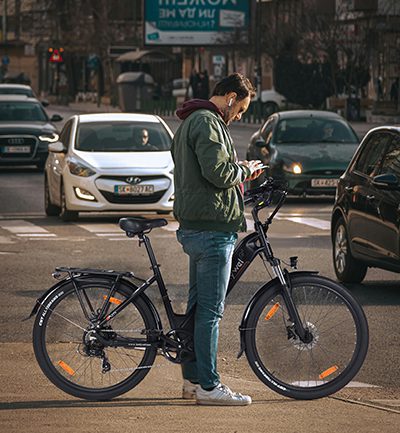Cycling is one of the most enjoyable and eco-friendly ways to get around, stay fit, and explore the outdoors. But with the rise of electric bikes (e-bikes), many people wonder whether they should stick with a traditional bike or switch to an e-bike. Both options have unique advantages, and the right choice depends on your lifestyle, fitness goals, and preferences. In this blog post, we’ll compare e-bikes and traditional bikes to help you decide which one is the best fit for you.
What’s the Difference?
Before diving into the comparison, let’s clarify the key differences between e-bikes and traditional bikes:
- e-bike: Equipped with a battery-powered motor that provides pedal assistance, making it easier to ride uphill, against the wind, or over long distances.
- Traditional Bikes: Powered solely by human effort, requiring you to pedal without any mechanical assistance.
e-bike: The Pros and Cons
Pros
- Easier on the Body
e-bikes are ideal for those who want to reduce physical strain. The motor assistance helps you tackle hills, headwinds, and long distances without overexertion, making cycling accessible to people of all fitness levels. - Extended Range
With an e-bike, you can cover greater distances in less time. This makes them perfect for commuting, running errands, or exploring new areas without worrying about fatigue. - Inclusive and Versatile
e-bikes are great for older adults, individuals with physical limitations, or anyone returning to cycling after a long break. They also allow riders of different fitness levels to cycle together comfortably. - Eco-Friendly Transportation
While not as eco-friendly as traditional bikes, e-bikes are still a greener alternative to cars, reducing your carbon footprint and traffic congestion. - Fun and Exciting
The added boost from the motor makes cycling more enjoyable, especially for those who might find traditional biking too challenging.
Cons
- Higher Cost
e-bikes are significantly more expensive than traditional bikes, with prices ranging from - 1,000to
- 1,000to5,000 or more.
- Heavier Weight
The motor and battery add extra weight, making the e-bike harder to carry or maneuver when the power is off. - Maintenance and Repairs
e-bike require more maintenance due to their complex electrical components, and repairs can be costly. - Limited Range
While e-bikes have a longer range than traditional bikes, they are still limited by battery life, which can be a concern on long rides.
Traditional Bikes: The Pros and Cons
Pros
- Affordable
Traditional bikes are generally more budget-friendly, with entry-level models starting at a few hundred dollars. - Lightweight and Portable
Without the added weight of a motor and battery, traditional bikes are easier to carry, lift, and store. - Low Maintenance
Traditional bikes have fewer components, making them easier and cheaper to maintain. - Great for Fitness
Riding a traditional bike provides a full-body workout, helping you build strength, endurance, and cardiovascular health. - Simple and Reliable
With no reliance on batteries or motors, traditional bikes are straightforward to use and less prone to technical issues.
Cons
- Physically Demanding
Traditional bikes require more effort, which can be challenging for beginners, older adults, or those with physical limitations. - Limited Range
Long distances and steep hills can be exhausting, limiting how far you can go in a single ride. - Less Inclusive
Riders of different fitness levels may struggle to cycle together, as some may find it harder to keep up.
Which One is Right for You?
Choose an e-bike If…
- You want to reduce physical strain or have health concerns that limit your ability to pedal.
- You need a reliable and efficient mode of transportation for commuting or running errands.
- You enjoy cycling but want to cover longer distances or tackle challenging terrains with ease.
- You’re looking for a fun and exciting way to explore the outdoors without exhaustion.
Choose a Traditional Bike If…
- You’re on a budget and want an affordable, low-maintenance option.
- You’re focused on fitness and want a challenging workout.
- You prefer a lightweight and portable bike for easy storage and transport.
- You enjoy the simplicity and reliability of a purely human-powered ride.
The Best of Both Worlds
Can’t decide? Some e-bikes allow you to switch off the motor and ride them like traditional bikes, giving you the flexibility to choose between assisted and unassisted cycling. This hybrid approach lets you enjoy the benefits of both worlds.
Conclusion
Both e-bikes and traditional bikes have their unique strengths, and the right choice depends on your individual needs and preferences. If you value ease, versatility, and extended range, an e-bike might be the perfect fit. On the other hand, if you’re looking for an affordable, low-maintenance, and fitness-focused option, a traditional bike could be the way to go.
Ultimately, the best bike is the one that gets you excited to ride. Whether you choose an e-bike or a traditional bike, you’ll be investing in a healthier, greener, and more enjoyable way to explore the world. So, what are you waiting for? Get out there and start pedaling!


